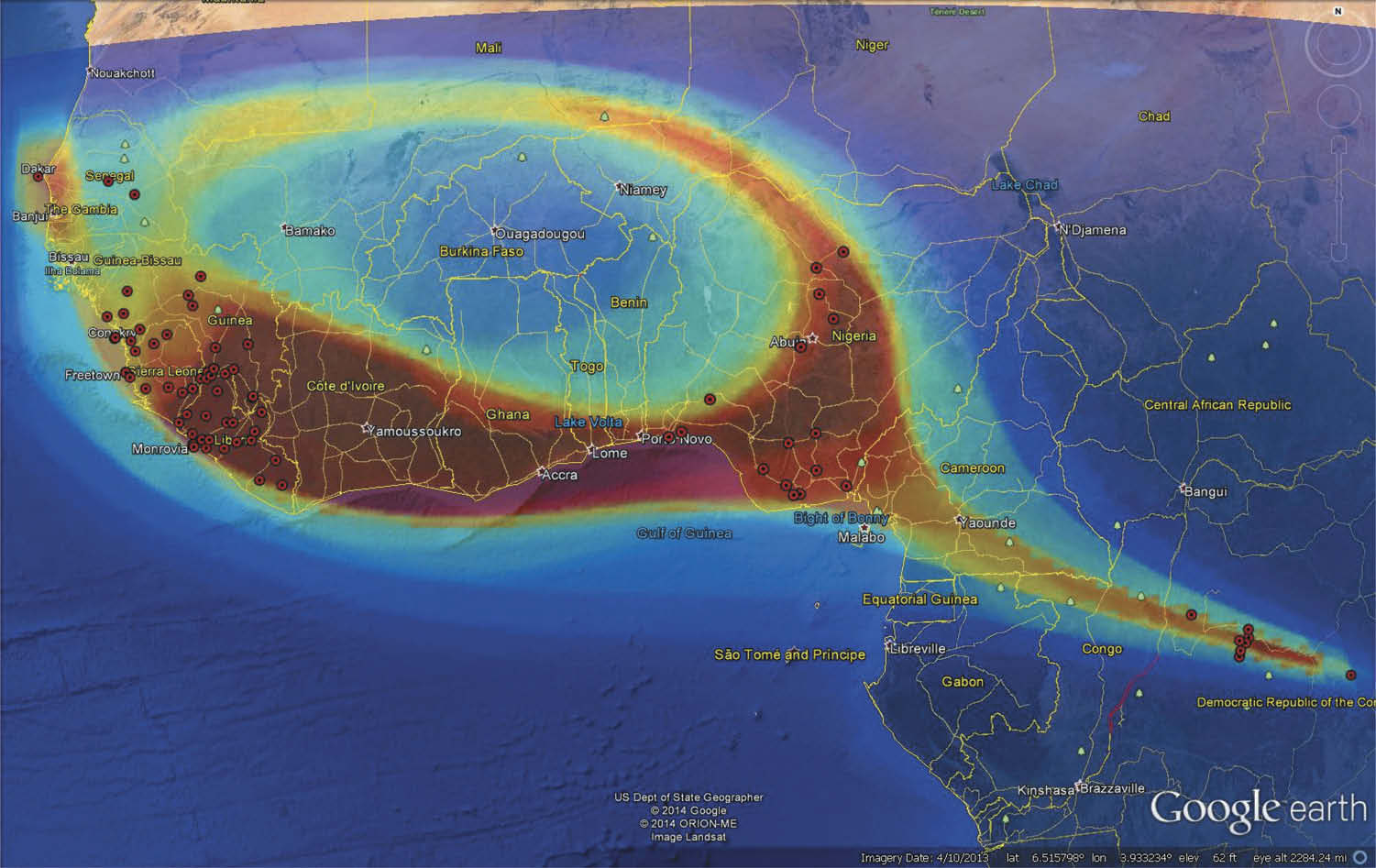(2020) Analysis of the Ebola Outbreak in 2014 and 2018 in West Africa and Congo by Using Artificial Adaptive Systems, Applied Artificial Intelligence, DOI: 10.1080/08839514.2020.1747770
In this manuscript the Ebola outbreaks in 2014 and 2018 have been studied. On March 23, 2014, the World Health Organization announced the beginning of the Ebola outbreak in West Africa. The initial location was in a forested area in the south eastern portion of Guinea. We used three different methods to determine the origin of the outbreak. The first was a suite of artificial adaptive systems called Topological Weighted Centroid which located the outbreak origin at Longitude: −10.5337, Latitude: 8.1517. This area is 64 km from Guekedou, Guinea. We also used a Dynamic Naive Bayesian/Dynamic Networks Block Algorithm. The Bayesian algorithm shows the main source of the Ebola outbreak at Kissidougou. Both of these methods revealed the outbreak started in the forested area southeast of Guinea. The distance between Guekedou and Kissidougou is about 69 km. Furthermore, we used an artificial neural network (ANN) called Selfie to predict the outbreak diffusion. The Ebola outbreak in May 2018 in Democratic Republic of Congo was not as widespread as the outbreak in 2014. The outbreak was effecting the health zones of Bikoro and Iboko, and Wangata in Congo. We have used an ANN algorithm and predicted the origin of the outbreak at (Longitude: 18.3046, Latitude: −0.6865) in the Equator about 20 km at North-West of Bikoro.

